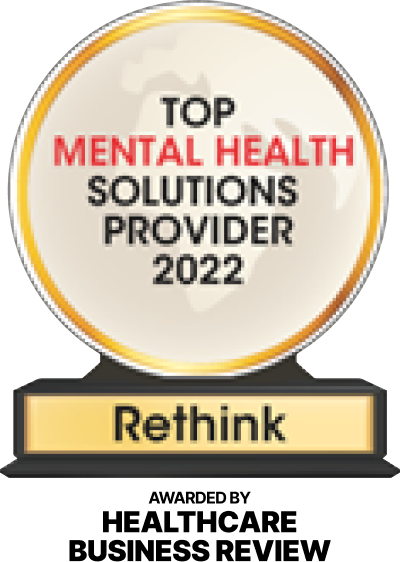NEW YORK – October 10, 2023 – Symptoms of poor mental health—including emotions like anxiety, depression and stress—are far more widespread than reported by high school students at the height of the pandemic, according to a recent survey conducted and shared by RethinkFirst.
I’m Dr. Roberta Scott, and this World Mental Health Day I’m sharing my thoughts and experiences about why it’s critical to be proactive for student mental health.
I’ll never forget the little boy who was in my second-grade class during my third year as a teacher in Houston. He was only 7 years old, but he had already been diagnosed with a mental illness: bipolar disorder.
Although he was smart and high-functioning, his behaviors (i.e. kicking, hitting, cursing) were hindering the other students in the class from learning.
Fortunately, I was able to build a strong relationship with his mother who I communicated with on a daily basis. I also followed his doctor’s recommendations for accommodations that might help him.
Yet I quickly realized that, like most teachers, I didn’t have the skillset or the training to support him.
Years later, I transitioned out of the classroom into various roles and became the director for social-emotional learning, student discipline, and crisis response and intervention. There, I was tasked with supporting students and teachers with a wide range of mental health issues.
This time I obviously was well-equipped, but nothing could have prepared me for the phone call I received from one of the principals in 2020.
A high school student, who was struggling with mental health issues and lacked support at home, took his life, the principal explained. Shocked and devastated by the news, all I could think was, what would make a child get to the point of no return and want to hurt himself?
While I’ll never know what that student felt when he made that tragic decision, what I do know is that if he had an outlet and a safe space to talk about his struggles, he might still be with us today.
Mental Health: By the Numbers
Student mental health challenges were apparent well before 2020, but it’s no surprise that the effects of the pandemic have only made the situation worse.
A new report from the Centers for Disease Control and Prevention (CDC) states poor mental and behavioral health remains a “substantial public health problem.”
Rates of anxiety, depression, behavior problems, and eating disorders are all on the rise, and U.S. Surgeon General Vivek Murthy recently dubbed mental health ‘the defining public health crisis of our time.’
Take these sobering statistics:
- 1 in 6 kids aged 6-17 in the U.S. experience a mental health disorder each year.
- 42% of high school students experienced persistent feelings of sadness or hopelessness.
- 14%-30% of high school students had seriously considered attempting suicide.
- From 2016-17 and 2019-21, visits to the emergency room for suicidal thoughts increased by 59%.
- Suicide is the second-leading cause of death in kids ages 10-14.
Although research shows early intervention improves health outcomes, unfortunately, only about 50% of youth with mental health challenges received support in the past year—making the need for schools to take a proactive approach all the more important.
How Educators Can Be Proactive With Mental Health
Mental health is health, and it has a direct link to academic performance. One survey found that half of high school students said depression, stress, and anxiety were obstacles to learning.
Teachers are often the first to notice kids struggling with their mental health, address issues such as bullying, and connect them with school resources.
Yet because of increased rates of mental health challenges, teachers are finding that their roles have evolved into that of a counselor.
Although schools always have the students’ best interests in mind, they’re often reactive and find themselves addressing mental health issues as they crop up.
As a result, kids may fly under the radar and schools will continue to be burdened by the increased need.
When schools take a proactive approach to mental health and have the right system and resources in place, however, kids get resources faster and outcomes improve.
While being proactive may appear challenging to implement, doing so can significantly enhance the health and well-being of everyone and alleviate the burden on educators, potentially saving lives in the process. Here are some best proactive practices:
1. Create a culture where kids feel safe and supported.
Kids should know how to easily access resources and who to reach out to before their challenges escalate. Additionally, fostering open communication, modeling kindness and respect, establishing clear expectations and boundaries, and prioritizing the individual needs and strengths of each student are ways to create a safe space at school.
2. Navigate kids to school and community resources.
Every child should have access to mental health resources—not only those who have 504 plans. Schools should provide kids and families with a list of community resources such as mental health providers, hotlines and crisis intervention hotlines, and inpatient and outpatient programs.
3. Keep the lines of communication open.
The school administration, counselors, social workers, psychologists, and teachers should facilitate regular conversations with students about the importance of mental health and how to practice self-care. Also, it’s important to ensure kids have at least one trusted adult they can talk to.
4. Incorporate support into the curriculum.
Help students to build the skills they need to manage their emotions, show empathy, develop a healthy identity, establish and maintain supportive relationships, achieve their goals, and make good decisions.
5. Provide digital content and training.
Offering educational solutions that provide lessons, activities, and training programs for teachers, kids, and families is a proactive way to address mental health issues.
Digital training enables schools to create a culture of inclusion, belonging, and connective-ness, all of which decrease anxiety, increase self-esteem, and drive success in school. Teachers can implement mental wellness check-ins and community circles, for example.
Lessons and activities are likely to cover topics such as:
- Mindfulness
- Meditation
- Resiliency
- Strength-based language
Educational solutions can also support the mental health needs of teachers and address stress and burnout.
Taking a proactive approach to mental health is critical to building resiliency, and providing the resources and support to help kids avoid some of the feelings of hopelessness, anxiety, and chronic stress.
Yet teachers can’t do it alone. School districts must empower them with the right resources, tools, and training to drive success.
Dr. Roberta Scott is a distinguished, passionate educator with 20 years of expertise in administration, counseling, and teaching and has successfully educated and empowered students to succeed despite their obstacles. Dr. Scott currently serves as the Vice President of National Partnerships with RethinkEd and previously served as the Director of the Social/Emotional Learning & Student Discipline department in the 7th largest school district in the nation.
About RethinkFirst
RethinkFirst is a global health technology company providing cloud-based treatment tools, training, and clinical support to employers, educators, payors, and behavioral health professionals. Rethink’s award-winning solutions serve thousands of clients globally, including nearly one-third of the Fortune 100 and many of the country’s largest public-school systems and health plans. Each of Rethink’s award-winning solutions incorporates evidenced-based protocols, workflow automation, and advanced data analytics to drive meaningful clinical outcomes and improved performance for customers and the communities that they serve.
For more information please visit our RethinkFirst website.
About RethinkEd
RethinkEd was founded on a simple, yet powerful idea: To re-think education. To make it better and easier. To unburden school districts and empower educators. To improve outcomes and elevate accountability. To promote collaboration and inspire learning. And most importantly, to make a difference in the school day for everyone – administrators, educators, and students. As a division of RethinkFirst, an award-winning technology developer of cloud-based tools, training, and supports, RethinkEd is pioneering EdTech. We’re relentless in pursuing innovative ways to put evidence-based, data-informed, digitally delivered instruction and assessments into the hands of educators, clinicians, and parents who share our single-minded focus: To help all children succeed.
For more information please visit our RethinkEd website.
Media Contact
Erin Bocherer, for RethinkFirst
[email protected]
678-294-2258














